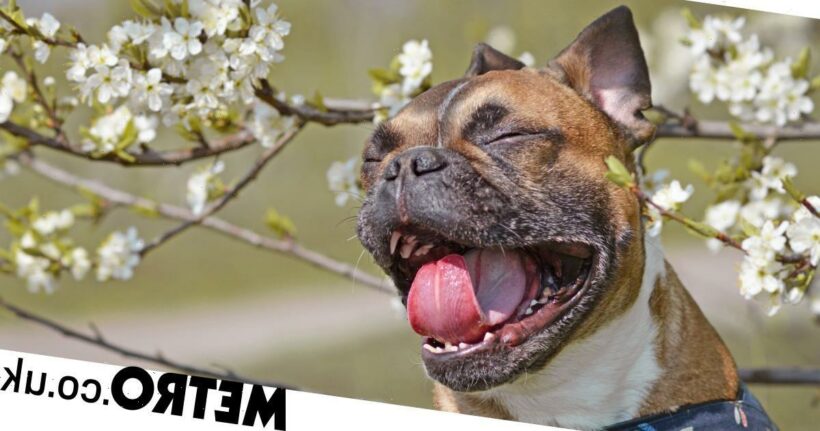If you’ve been sniffling and sneezing since the weather warmed up, you might not be alone.
Your pets can also get hay fever, and as they can’t tell you, it can go unnoticed.
Dr Scott Miller, TV Personality and Resident Veterinarian for sustainable cat litter brand, Natusan, comments: ‘With the pandemic leading to a nationwide puppy boom, there are many young cats and dogs across the country who have spent a vast proportion of their formative years indoors, and as a result, won’t have been exposed to the great outdoors as much.
‘Which makes them more vulnerable to hay fever – as they will have a lower tolerance to pollen.’
Dr Scott explains that pets are also more susceptible to pollen because they inhale it – like us – but their skin is also exposed from playing outside.
Pollen counts typically rise between about March and September, so here’s what to look out for given it’s peak hay fever season.
Signs of hay fever in pets
Excessive grooming or body biting
Like humans, cats and dogs can also be plagued with the sensation of itchiness – which they will reactively look to scratch as a solution.
Sores or bald patches
Excessive scratching can lead to visible sores on their skin and even bald patches of fur from the friction caused
Sneezing or snoring
It might be unusual to hear certain sounds coming from your pet – but listen out for sneezing, wheezing, snoring or coughing – as these could indicate they’re experiencing inflammation in the throat from hay fever.
Itchy eyes
A symptom in which we can all relate to. Pets can also be prone to itchy and runny eyes – just as we do – when afflicted with seasonal allergies.
Sore paws
cats could chew at their paws, whereas rashes can manifest on your pooch’s paws – so keep an eye out for irritation.
What to do if your pet has hay fever
If you think your pet seems to have hay fever, the first thing to do is take them to the vet.
Don’t give your pet human antihistamines as they could harm them (as dosages are different). The treatment your vet does give will be dependent on your pet, but can involve eye drops, nasal sprays, injections, or creams.
Dr Scott adds: ‘[The vet] can also cancel out anything more sinister – such as fleas or Dry Eye; a condition more common in dogs which also manifests in irritation of the eyes.’
Keeping on top of daily cleaning to remove pollen from the house and planning walks in the morning (when the count is lower) are good ways to reduce symptoms.
Ensure to wash any coats or blankets they wear regularly to get rid of any pollen that might still be lurking.
Do you have a story you’d like to share?
Get in touch at [email protected].
Source: Read Full Article


